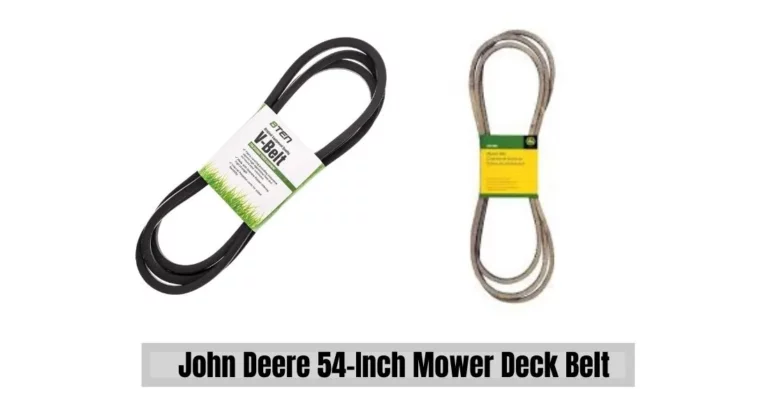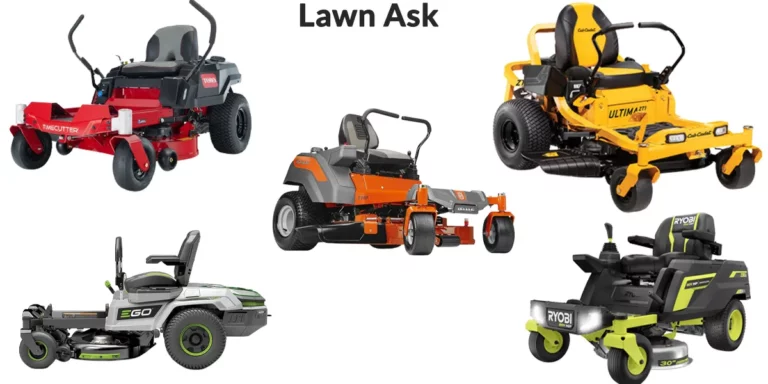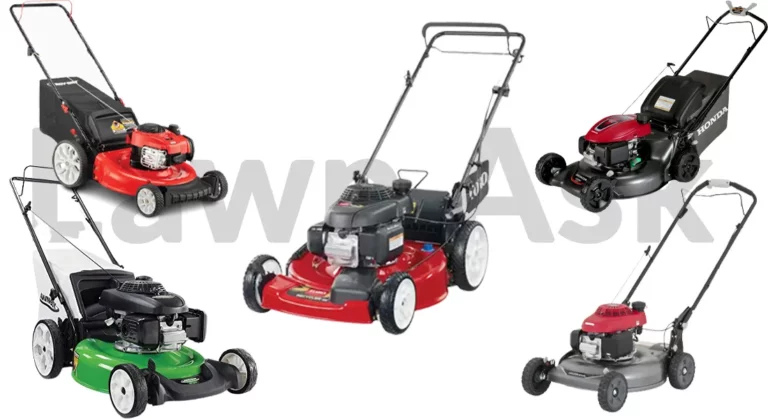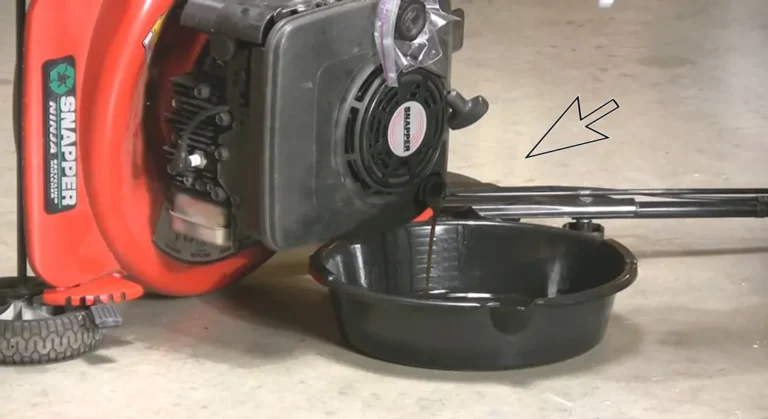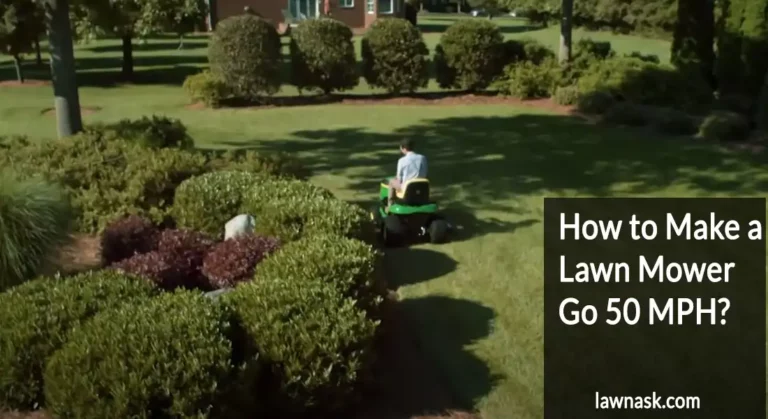What Causes A Lawn Mower To Leak Oil?
Homeowners and gardeners may have seen lawn mower oil leakage. This unanticipated issue leaves unattractive stains on your lawn and raises questions about the health and function of your favorite machine.
If seals are worn or fractured, cylinders may leak oil. Also, clogged breathers, crankcase air leaks, and worn dipstick O-rings can cause oil leaks.
Understanding why a lawn mower leaks oil is vital to its longevity and performance. Overfilled reservoirs and damaged seals can cause oil spills.
This article will help you discover, troubleshoot, and fix lawn mower oil leaks by explaining the main causes. Let’s examine what causes a lawn mower to leak oil, its symptoms, and successful solutions.
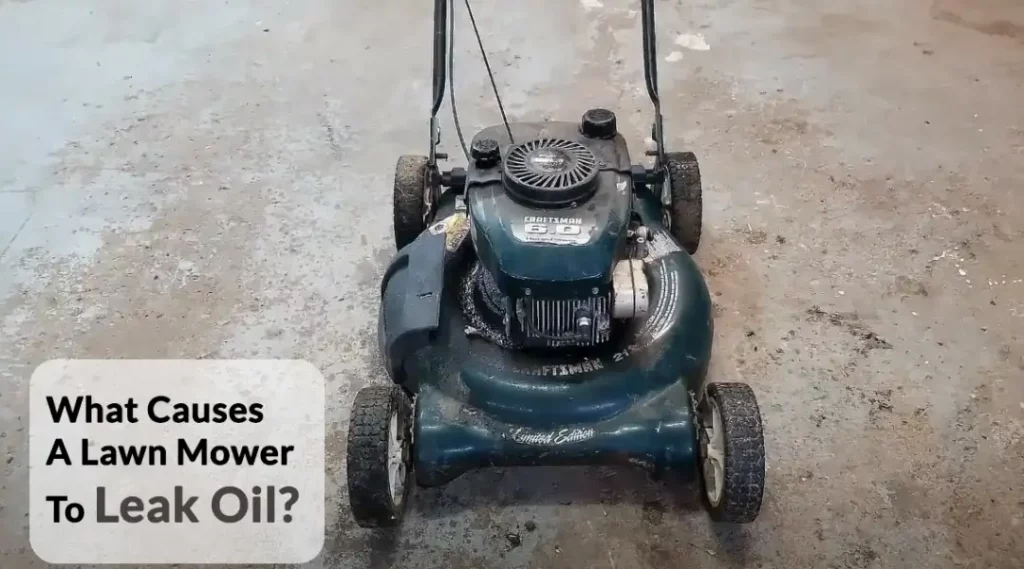
What Causes A Lawn Mower To Leak Oil?
Lawnmower engines have to have a steady supply of oil flowing through the crankcase and into the piston.
Any engine will be severely damaged if oil is lost from the fuel tank or pump before it gets to the engine. If your lawnmower is leaking oil, you should immediately stop it, investigate the source of the leak, and then fix it.
Several sources agree that neglecting routine maintenance, particularly the necessity of changing engine oil on a regular basis, is a major contributor to oil leaks from the engine.
If the oil isn’t changed on schedule, it can get contaminated, destroying the seals and gaskets in the engine and causing oil leaks at various points.
A worn-out dipstick and O-ring are two other potential reasons of oil leaks.
So, if you’re wondering, “Why is oil leaking from my lawn mower?” one possible explanation is filthy oil. The gaskets and seals in the engines have grown poisonous due to the engines.
Related Post: Lawn Mower Leaking Oil From Air Filter: Here’s How to Fix It!
Where Does on Lawn Mowers Oil Usually Leak From?
The oil pan gasket is the most prevalent source of oil leaks in lawnmower engines. The oil is stored in a pan at the base of the motor.
Over time, heat, vibration, and general wear and tear can weaken the gasket that seals the oil pan to the engine block. Because of the gasket’s inability to keep the oil in, this can cause leaks.
The oil pan gasket is especially vulnerable to wear and tear because of its location, which leaves it open to the environment and debris. Oil leaks can also be caused by the lawnmower hitting an impediment, denting or warping the oil pan, and so damaging the gasket.
Although the oil pan gasket is the most likely culprit, other gaskets and seals in the engine, including the valve cover gasket, crankshaft seals, oil filter, and others, might also let oil spill.
Various other components of the lawnmower, such as the exhaust, carburetor, and air filter, are susceptible to oil leakage.
Why Does Oil Leak from The Exhaust?
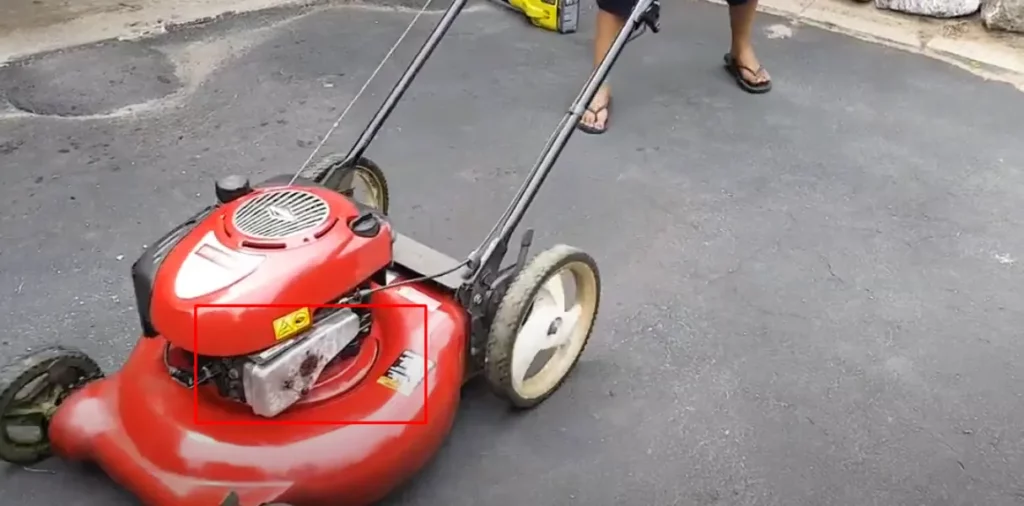
Several conditions might cause engine exhaust oil to leak. Piston rings may be worn. Piston rings seal the combustion chamber from oil.
Oil might reach the combustion chamber through broken rings. The exhaust releases oil as it burns. Valve seal damage is another possibility. The intake and exhaust valve seals prevent oil from entering the combustion chamber. Oil can leak into the combustion chamber and exhaust through worn seals.
What Happens When Lawnmower Oil Leaks?
When people mow their lawns, they often don’t notice whether their mower is leaking oil since the drops don’t show up on the grass. When vehicles are parked on the ground, any oil that comes out is rapidly cleaned up by the soil.
Depending on the extent and location of an oil leak, lawnmower owners may face a variety of problems. Some potential outcomes include the following:
Reduced Lawnmower Engine Lubrication:
Lubrication prevents friction, heat, and engine component damage.
If the lawnmower is leaking oil, the engine may overheat and stop working. Due to insufficient lubrication the crankshaft is the first to break, followed by the piston and piston rings. This can be the end of your lawnmower as the metal parts of the engine grind against each other, causing friction and eventually failure.
Poor Performance:
The engine’s performance may suffer if the oil leak damages the lubricating system. When this happens, the engine may not operate as smoothly, lose power, or perhaps stop working altogether. The lawnmower’s efficiency and effectiveness in cutting grass may suffer as a result of this.
Smoke and Unpleasant Odor:
The presence of smoke and foul odors is an indication that oil has leaked onto heated engine parts. This can be an annoyance for the operator and close bystanders, and it could be an indication of a serious oil leak that needs fixing right away.
Pollute Environment:
Leaked lawnmower oil can pollute the environment. Oil pollutes soil, kills plants, and endangers wildlife. Clean up and dispose of spilt oil immediately.
Related Post: Lawn Mower Leaking Oil from Bottom! (Why+How to Fix)
How to Identify if a Lawnmower Leaks Oil?
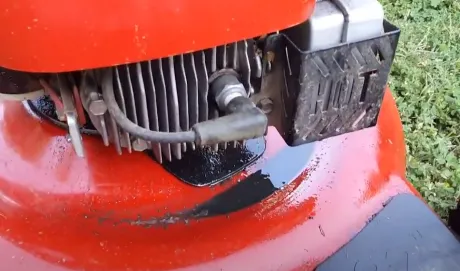
To determine whether or not a lawnmower is leaking oil, it is necessary to search for visible signs.
Here are the apparent indicators that will tell you whether your lawn mower is leaking oil or not.
If your mower is leaking oil, you may notice some of the following:
- Visible oil accumulation or wetness
- Oil drips or stains
- Exhaust smoke that is white or blue
- The burning stench of oil leaking from the mower onto the ground
- The engine will make some strange noises.
The location of the oil leak cannot be determined based on these symptoms alone. Further examination and diagnosis are needed to pinpoint the leaking part or location.
How To Fix Lawn Mower That Is Leaking Oil?
Fixing a lawnmower oil leak entails finding the source and repairing or replacing the damaged parts. Follow the steps to remedy oil leaks:
Step-1 Take Safety Measures
Make sure the lawnmower is unplugged, the engine is cool, and the spark plug wire is detached before beginning any repairs.
Step-2 Locate The Source Of Oil Leak
Finding the leak’s origin requires a thorough cleaning of the lawnmower’s engine and its surrounding area. Locate the source of the oil leak by performing a thorough inspection of the engine. The oil pan gasket, the valve cover gasket, the crankshaft seals, the oil filter, and other gaskets and seals are typical places to inspect.
Step-3 Drain oil
You will need to empty the oil from your lawn mower after you have located the leak. While the drain plug on some models of lawn mowers makes draining the reservoir simple, other models may require tipping the mower on its side.
Step-4 Tighten or Replace Gaskets and Seals
If the leak appears to be coming from a gasket or seal, you should either tighten it or replace it. In order to replace a gasket, you may need to remove the corresponding cover or component, as is the case with the valve cover gasket and the oil pan gasket. Before you install a new gasket, make sure the area is clean.
Step-5 Remove Faulty Parts
A leak could be the result of a damaged part, such as a fractured oil pan or a clogged filter. Locate a supplier or manufacturer of lawnmower replacement parts, and order a replacement for the faulty component.
Step-6 Tighten Loose Fittings
Check for loose connections and tighten them up; this includes the oil drain plug, oil filter, and dipstick tube. Oil leaks can be caused by loose connections.
Step-7 Seal Mating Surfaces After Cleaning
It may be necessary to clean the engine block and its components’ mating surfaces before reassembling with a new gasket or sealant. If a sealer is called for, use an appropriate solvent to clean the surfaces and then apply it.
Step-8 Test And Monitor
After finishing the maintenance, start the lawnmower and let it run for a few minutes while keeping a close eye on it. Look for any recent changes or leaks. Make sure the leak is fixed by checking the oil level after each use.
Related Posts:
- Step-by-step guide: Fixing a lawn mower leaking oil from the bottom
- Riding mower leaving a strip in the middle – Reasons and solutions
- Proven techniques for removing oil residue from a lawn mower engine
- Step-by-step guide: Fixing a lawn mower leaking oil from the air filter
- Fixing oil leaks from the bottom of your Honda lawn mower

